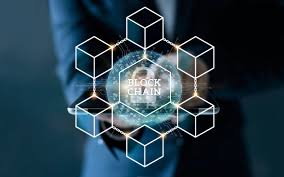Skip to content

Introduction:
- What is Blockchain?: A brief introduction to the concept of blockchain and how it works.
- The Evolution of Digital Transactions: Discuss how digital transactions have evolved, and how blockchain fits into the broader picture of financial technology.
Chapter 1: The Basics of Blockchain Technology
- How Blockchain Works: Explain the structure of blockchain (blocks, chains, and decentralized ledger).
- Public vs. Private Blockchains: Differentiate between public and private blockchains and their respective uses.
- Consensus Mechanisms: Introduce proof-of-work, proof-of-stake, and other mechanisms that ensure blockchain’s integrity.
Chapter 2: Blockchain and Cryptocurrencies
- Bitcoin and Ethereum: A look at the two most prominent cryptocurrencies and how blockchain underpins their operation.
- How Blockchain Powers Cryptocurrencies: Explain how blockchain allows for secure, peer-to-peer transactions without the need for intermediaries.
- The Role of Miners and Validators: Dive into how miners (or validators) maintain the blockchain network.
Chapter 3: The Benefits of Blockchain Technology
- Security and Transparency: Discuss the enhanced security features of blockchain and how it ensures transparency and trust.
- Reduced Transaction Costs: Explain how blockchain eliminates the need for intermediaries, lowering costs.
- Faster Transactions: Highlight the speed advantages of blockchain, particularly in cross-border payments.
Chapter 4: Blockchain Beyond Cryptocurrencies
- Smart Contracts: Introduce the concept of self-executing contracts and how blockchain makes them possible (e.g., Ethereum smart contracts).
- Supply Chain and Logistics: Explore how blockchain is revolutionizing supply chain transparency and tracking.
- Healthcare: Look at how blockchain can improve data management and security in the healthcare industry.
- Voting Systems: Discuss how blockchain could provide more secure and transparent voting systems.
Chapter 5: Challenges Facing Blockchain Adoption
- Scalability Issues: Discuss the challenges of scaling blockchain networks to handle large numbers of transactions.
- Regulatory Concerns: Address the legal and regulatory landscape surrounding blockchain and cryptocurrencies.
- Energy Consumption: Look at concerns regarding the environmental impact of proof-of-work systems and the transition to more energy-efficient mechanisms like proof-of-stake.
Chapter 6: The Future of Blockchain and Digital Transactions
- Blockchain in Web3: Explore the role of blockchain in the emerging Web3 ecosystem and decentralized applications (dApps).
- Blockchain in Finance (DeFi): Discuss how decentralized finance (DeFi) is transforming traditional financial services, such as lending, borrowing, and trading.
- Interoperability: The future of blockchain in connecting different networks and ensuring seamless transactions between various blockchains.
Chapter 7: How to Get Involved with Blockchain
- Investing in Cryptocurrencies: Tips for getting started with cryptocurrency investment.
- Learning Blockchain Development: A guide for those interested in learning how to develop blockchain-based applications.
- Blockchain Communities and Resources: Highlight online communities, educational platforms, and events for those wanting to deepen their knowledge.
Conclusion: Embracing the Future of Digital Transactions
- Blockchain’s Potential: Recap the transformative potential of blockchain technology.
- The Path Ahead: Encourage readers to stay informed and engage with blockchain as it continues to evolve and reshape industries.

